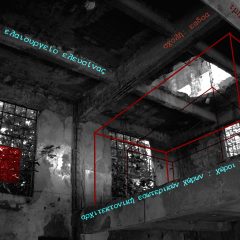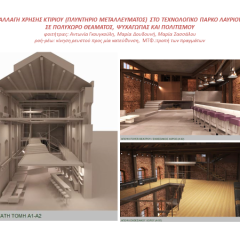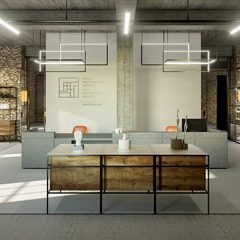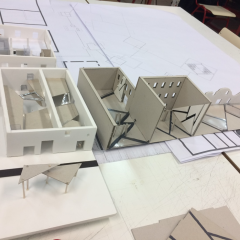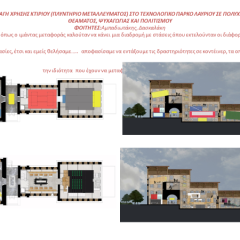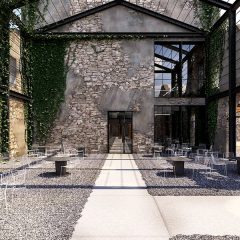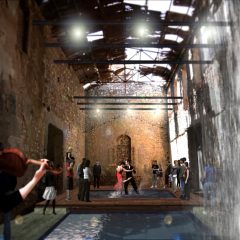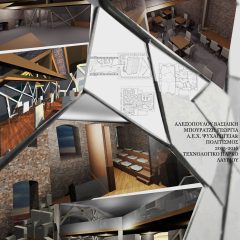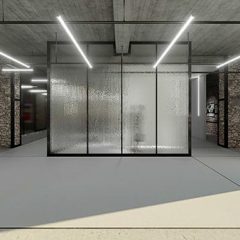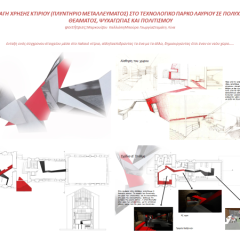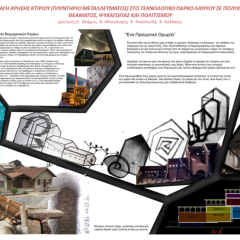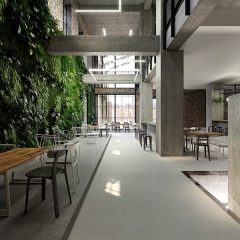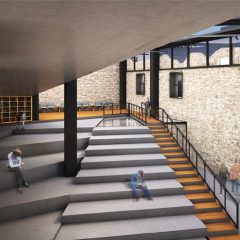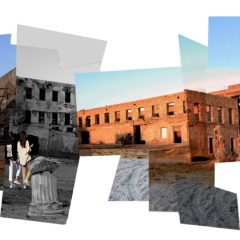Course Tutors
Fragkou Dionysia, Dr. Barkouta Ioanna, Dr. Michalopoulou Katerina
General
The series of synthetic courses of Interior Architecture is placed at the core of the epistemological content of the department. These courses aim to explore theories and practices concerning individual areas, scales and construction practices in architectural interior design. They develop analytical and synthetic ideas and issues that involve research and practice, and study the dimensions of human presence in different environments, ranging in scale from the room to the public, urban space. The studies carried out encourage the creative mental process in design and introduce the interior space as a field of critical attitude, as a vehicle of social relations and as a construction that communicates specific spatial identities as it uses narratives, materials and objects. At the same time, students become familiar with the idea of a design that is understood both as a methodological approach and as a universal, human-centered experience, including the dimensions of physical, cognitive, and programmatic ergonomics. Thus, through these courses, the analytical and synthetic process, the critical thinking, the holistic view, the possibility of decision making and the interdisciplinary approaches that include all the parameters of architectural interior design are strengthened, with scaling of knowledge and practical applications.
Course content
The content of the specific synthetic course of the 6th semester, focuses on the creative design of interiors related to culture, spectacle and entertainment (Soul Education), in spaces that belong to the industrial cultural heritage. The design approach of these spaces is done through the reflection, exploration and familiarization of students with concepts related to the industrial architectural cultural heritage and its reuse. The object of the course of Architecture VI is the investigation of the integration of places of entertainment and culture in places that belong to the industrial cultural heritage. Industrial heritage has historical, architectural, technological, social and scientific value for each place (TICCIH 2003) The course is organized in two axes, theory and application. These axes work in unison, with the theory evolving gradually and supporting the implementation part throughout the course. Through the Theory and Design section, students experiment and create new places of culture and entertainment. The exploration of the spectator-spectacle-spectacle reception relations, the creation of hybrid spaces of exhibition culture and others with emphasis on interaction and experiential experience, are the basic synthetic elements for the production of new research ideas and the creation of modern spectacle and culture spaces with parallel promotion of the industrial-cultural heritage. The theory includes lectures with the following topics:
– Cultural Heritage, Industrial Heritage, Reuse of Industrial Premises
– The evolution of the theatrical space, modern experimental theatrical spaces and perceptions.
– Culture and entertainment venues analysis-specifications, modern technology.
– Interactive Small Museums, exhibition spaces –Social planning
The theoretical part is completed with the elaboration by the students of individual work on a topic related to the subject and is publicly supported on a scheduled date. The applied / laboratory part includes a study (project) that concerns the intervention and the overall synthetic configuration of a space in a specific building shell of the Industrial heritage.
Programme aims
The aim of the course is to acquire knowledge and skills so that students can systematically approach and solve methodical and creative synthetic problems of any field related to Culture, Spectacle and Entertainment. Through the dialectical relationship between theory and application, the following objectives are pursued:
– Familiarization of students with the systematic approach of architectural interior design related to culture, spectacle and entertainment, in areas belonging to the industrial cultural heritage.
– Understanding the concept and structure of public spaces
– Awareness on issues of protection, promotion of industrial heritage and reuse of industrial buildings.
– The knowledge of the methods and ways that concern interventions for the promotion of the industrial-cultural heritage.
– The reflection and development of a critical attitude, in matters of interpretation and choices.
– The ability to evaluate research results and their composition, by creating new hybrid experimental prototypes.
– The development of critical thinking and creative perception
– The development of personal creativity and originality.
– Familiarity with the use of expressive means (tools) for the representation and description of space, at each stage of the synthetic process
– The cultivation of active participation and teamwork.
– The cultivation of the possibility of public presentation and support of their studies.
– The knowledge and application of safety rules and regulations concerning the autonomous, equal and safe access and movement of all users in public places
Learning Outcomes: Knowledge and Understanding
The course is organized in two axes, theory and application. These axes work in unison, with the theory evolving gradually and supporting the implementation part throughout the course. The theory includes lectures by the course instructors as well as visiting teachers. The theoretical background is supported in parallel with educational visits to selected industrial heritage sites, entertainment venues and exhibition spaces. Also by participating in Museum activities, exhibitions and creating workshops in industrial heritage sites with the aim of experiential experience. Students prepare an individual research paper on a topic related to the subject of the course, which is determined at the beginning of the academic semester by the teachers. The applied / laboratory part of the course includes laboratory work. Students undertake to study a topic related to the subject of the course. Upon successful completion of the course students:
– Will be able to study, methodically, synthetically and creatively, places related to spectacle, entertainment and culture in places belonging to the industrial cultural heritage.
– They will be aware of issues of protection and promotion
– cultural heritage, with the aim of upgrading the environment and improving the quality of life.
– Will be able to know and apply the safety rules and regulations concerning the autonomous, equal and safe access and movement of all users in public places
– They will be able to follow an analytical and synthetic process with the support of the formation of their ideas (concept).
– They will have developed their personal creativity.
– They will have acquired the ability to evaluate research results and their composition.
– They will have the opportunity to develop and publicly support their design choices in their studies.
– They will have acquired critical thinking and speech.
– They will have cultivated the spirit of cooperation
Bibliography
– N.Stanley Price, M.Kirby Talley Jr., A.Melucco Vaccaro, Historical and Philosophical Issues in the Conservation of Cultural Heritage, The Getty Conservation Institute, 1996.
– N..Richter Greer, Architecture transformed, New life for Old Buildings, Gloucester 19982.
– ICOMOS-ISCS: Illustrated glossary on stone deterioration patterns, ISBN: 978-2-918086-00-0, EAN: 9782918086000, Impression septembre 2008, Ateliers 30 Impression, Champigny / Marne, France.


